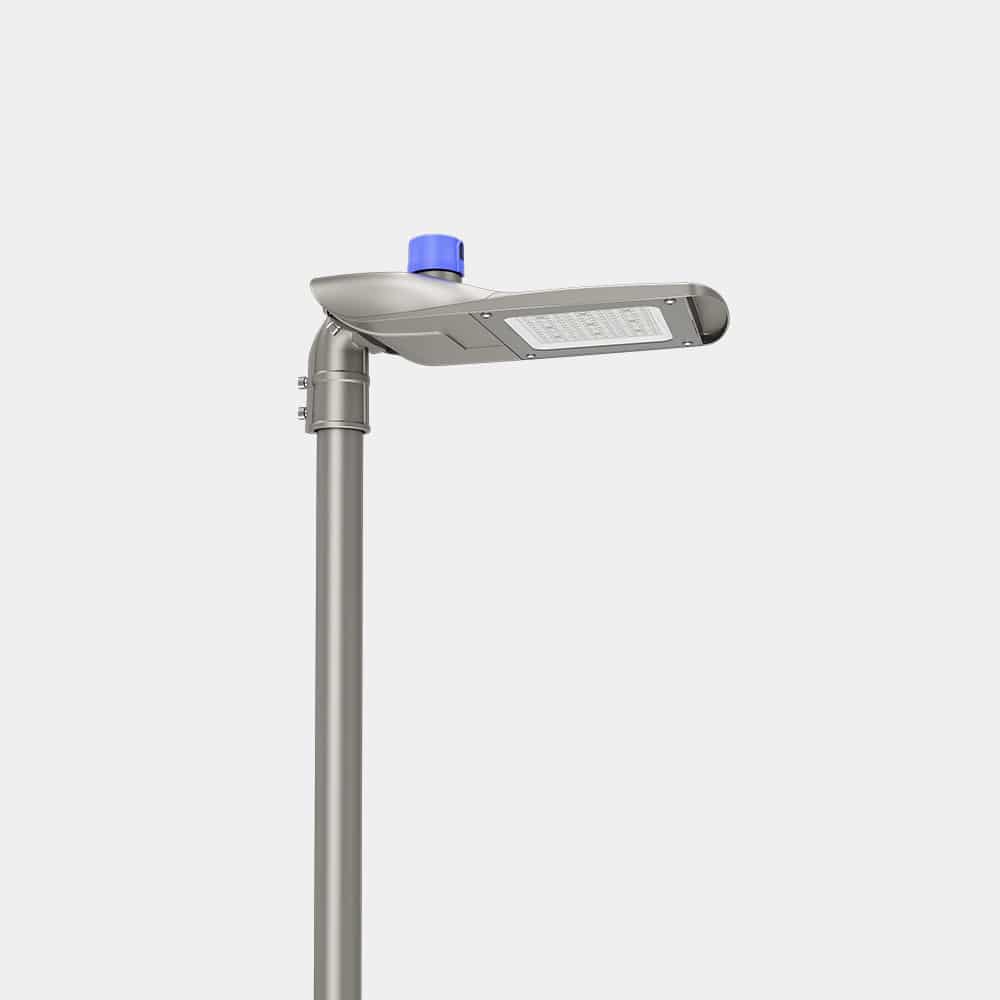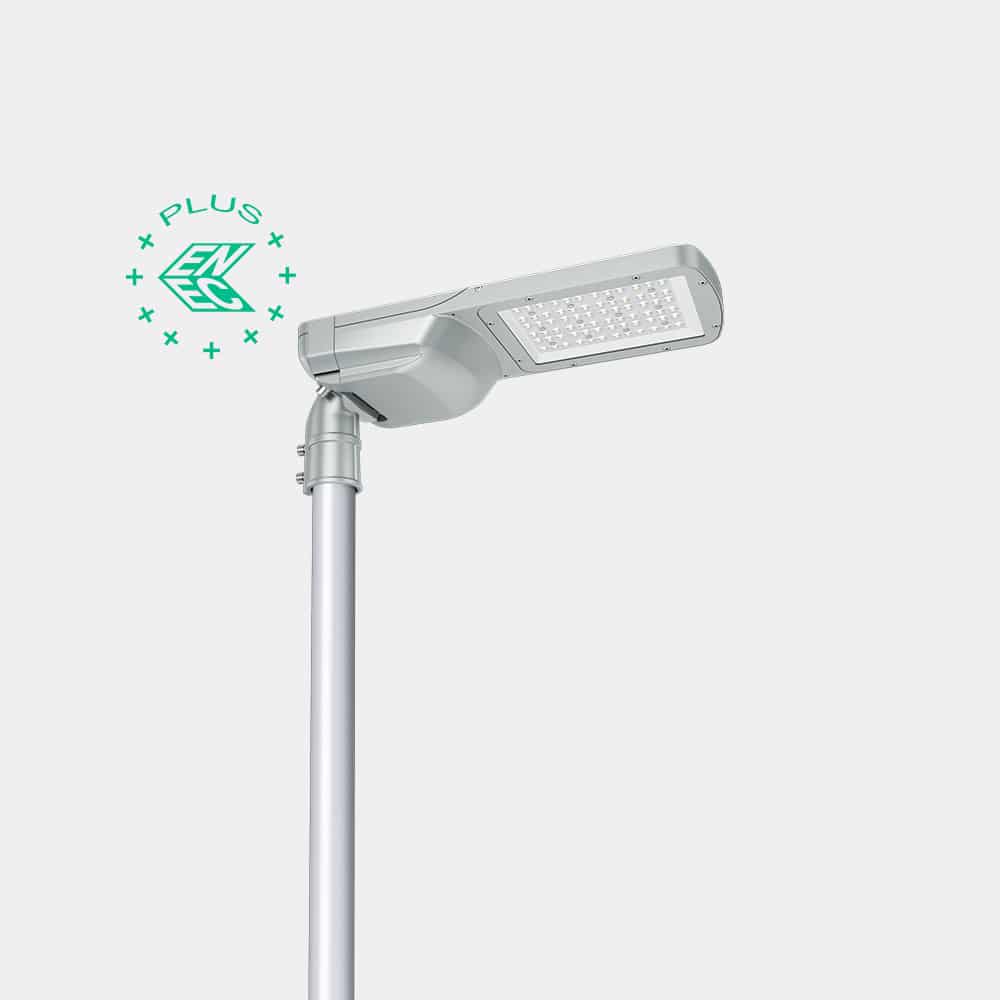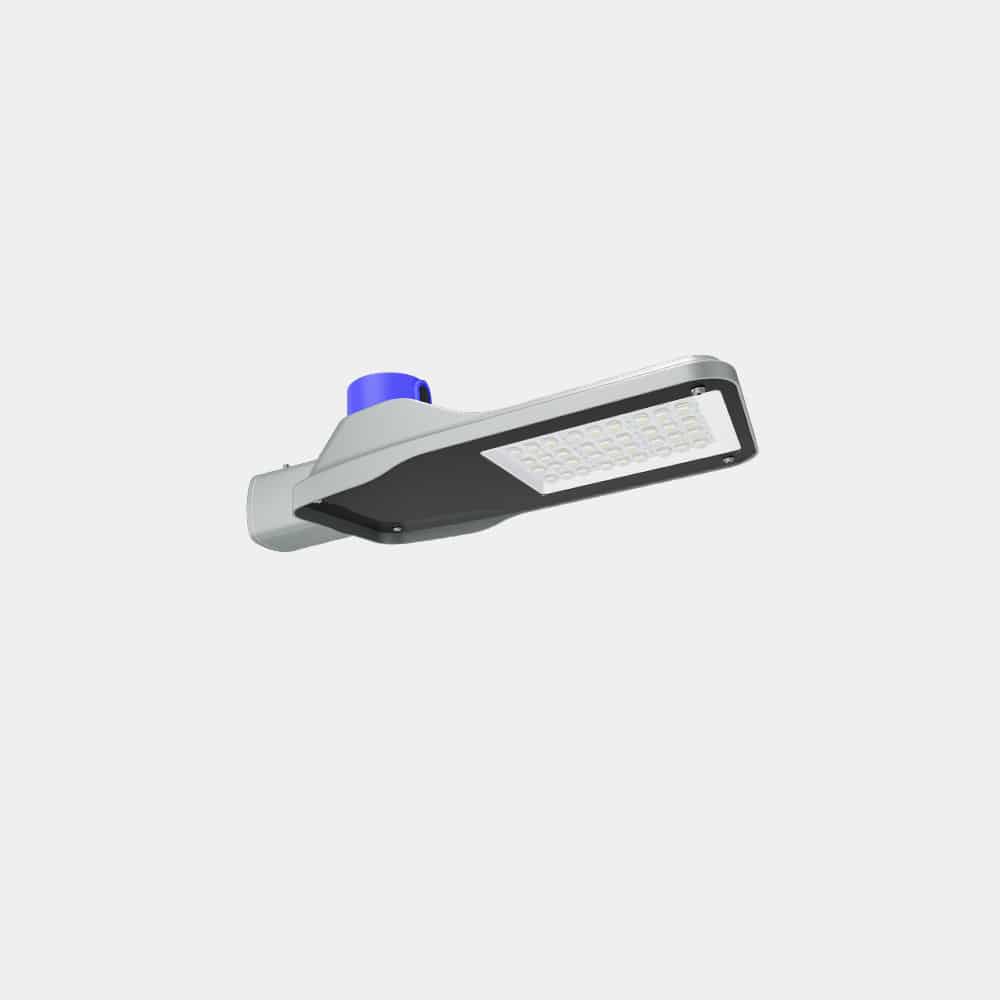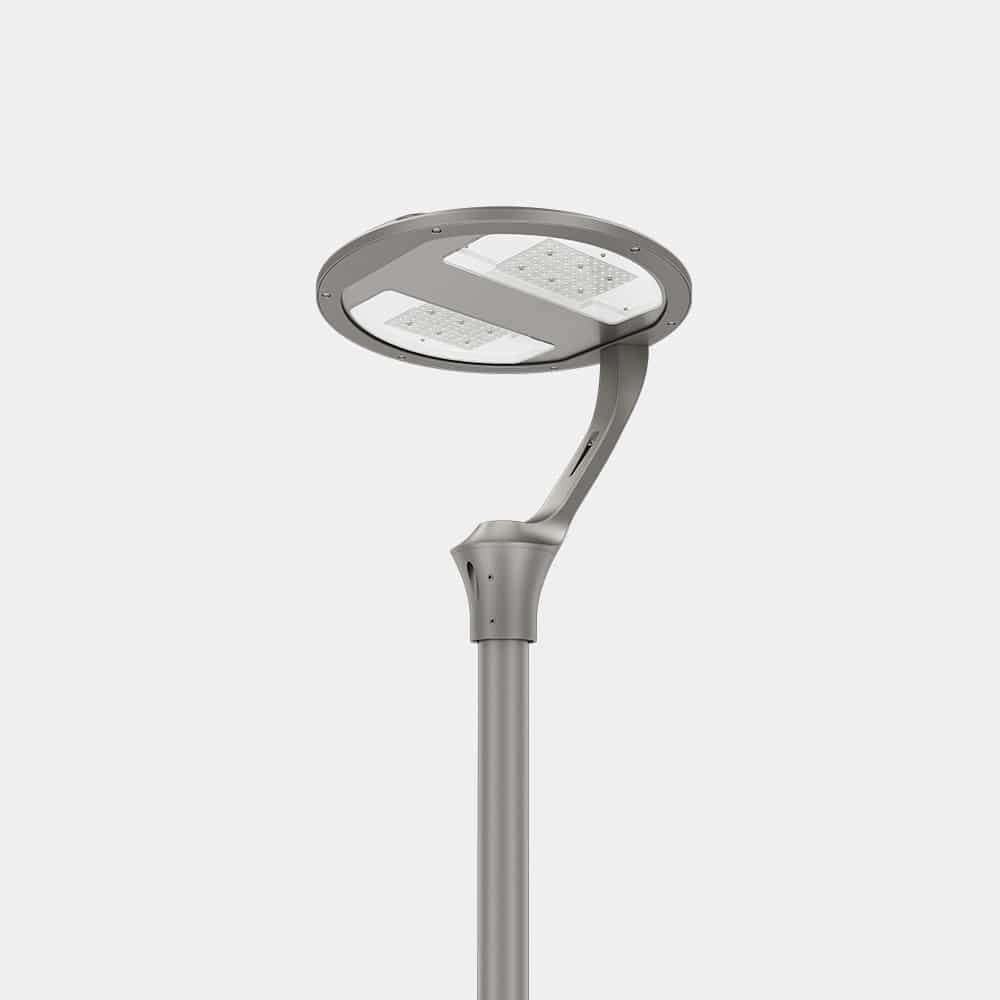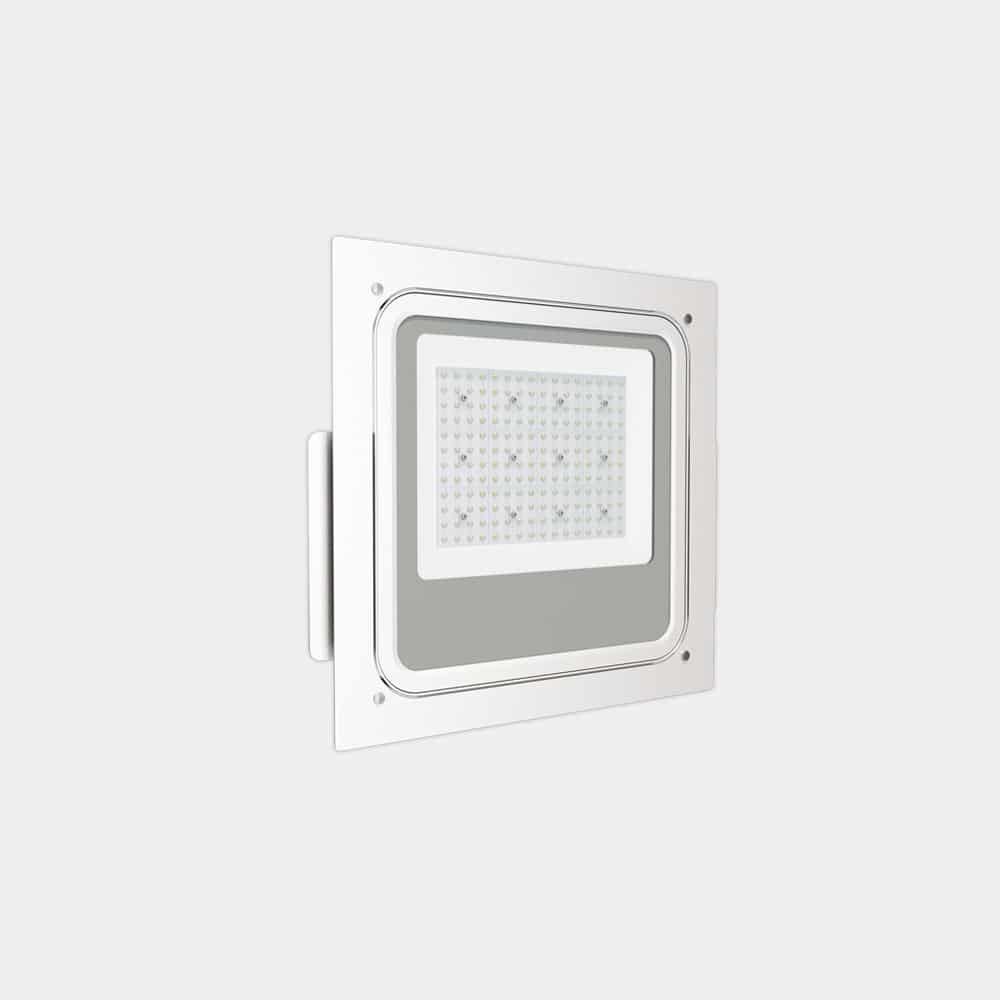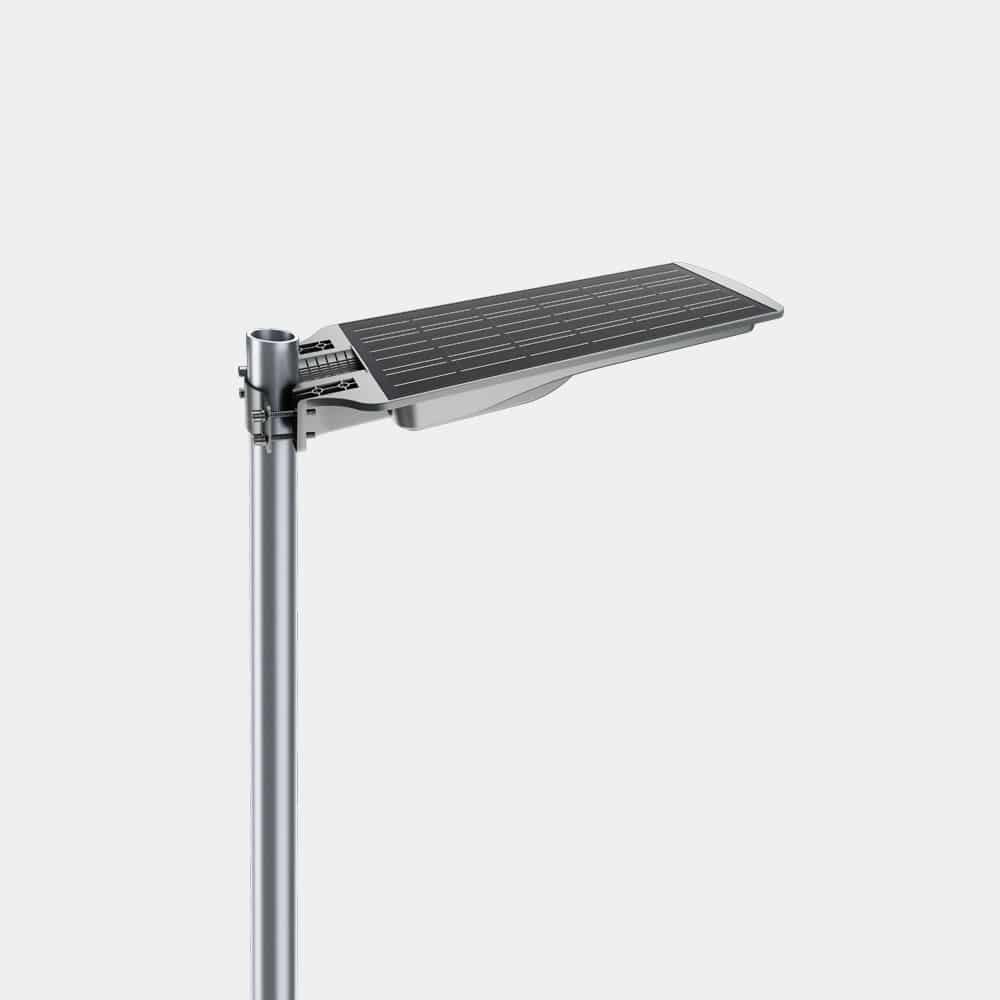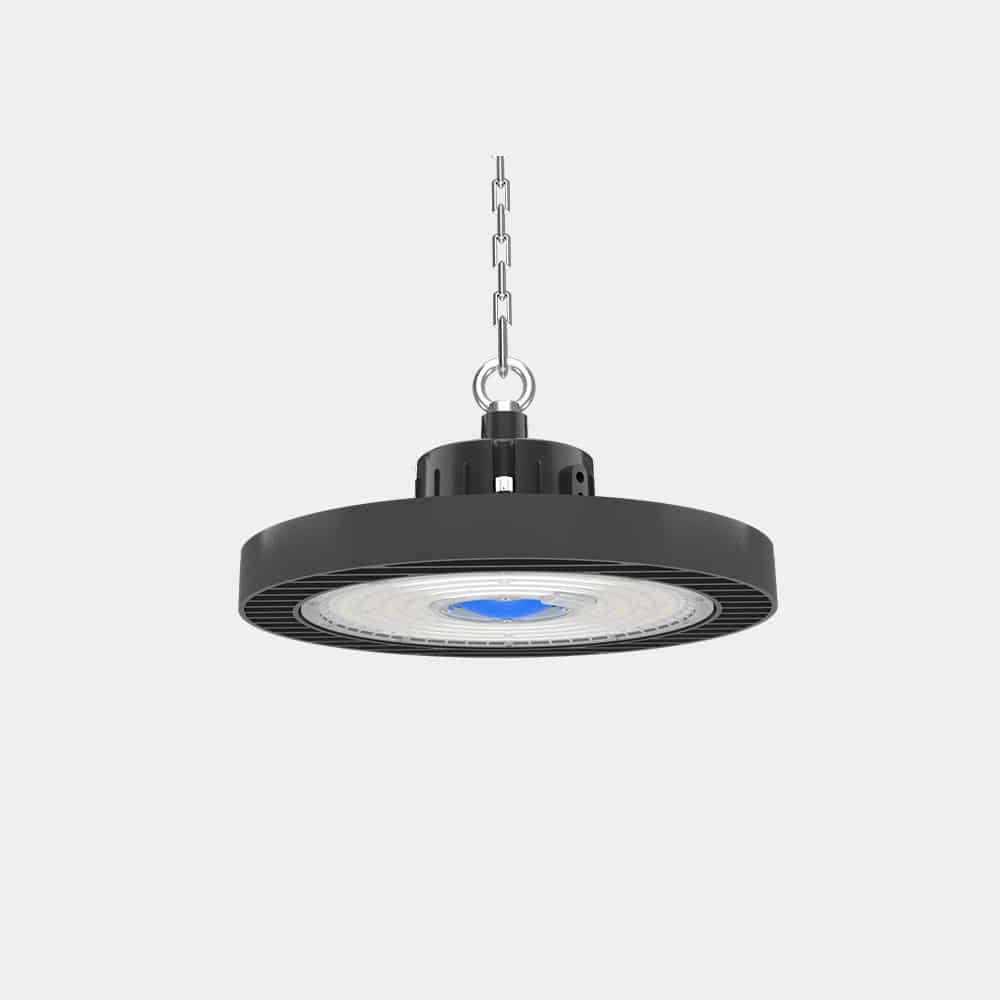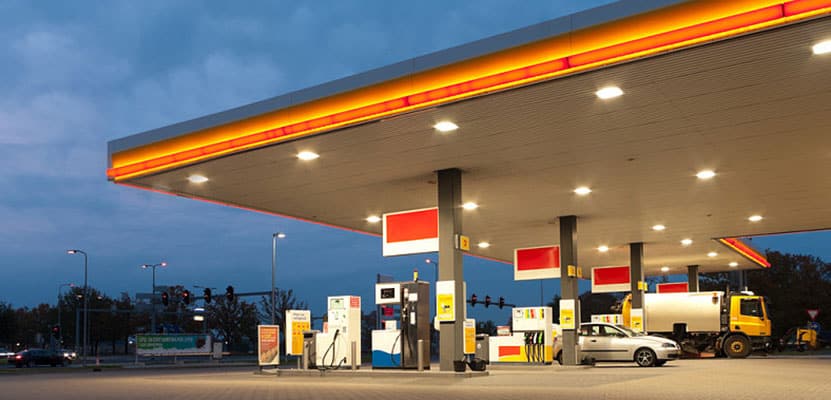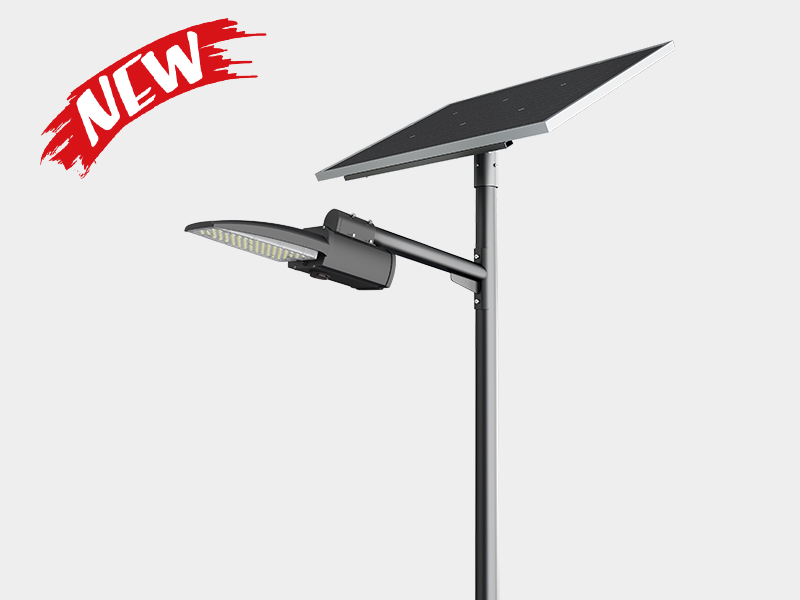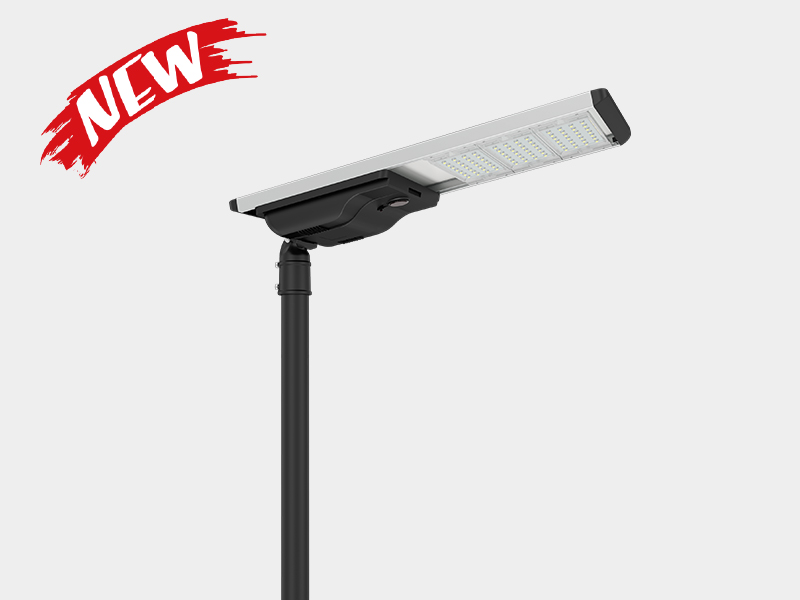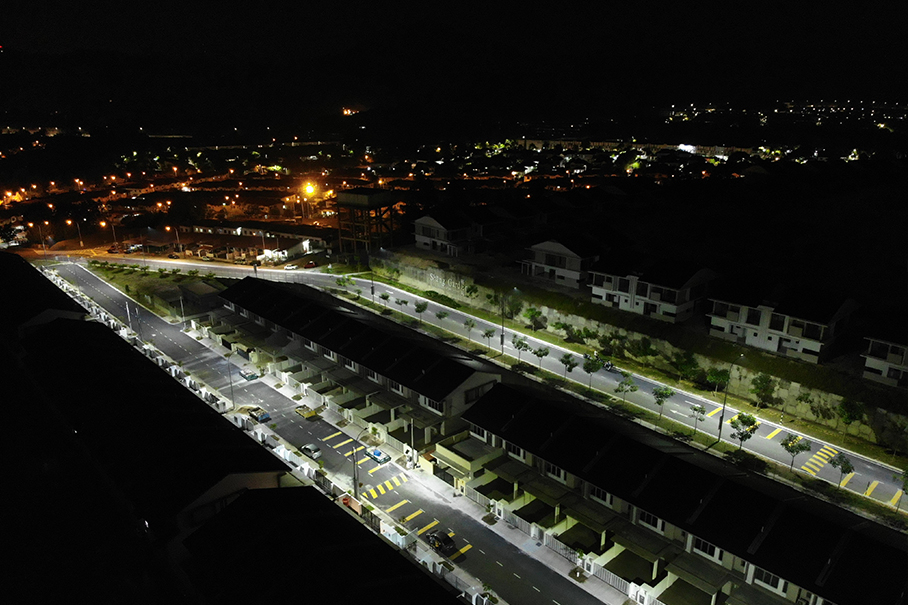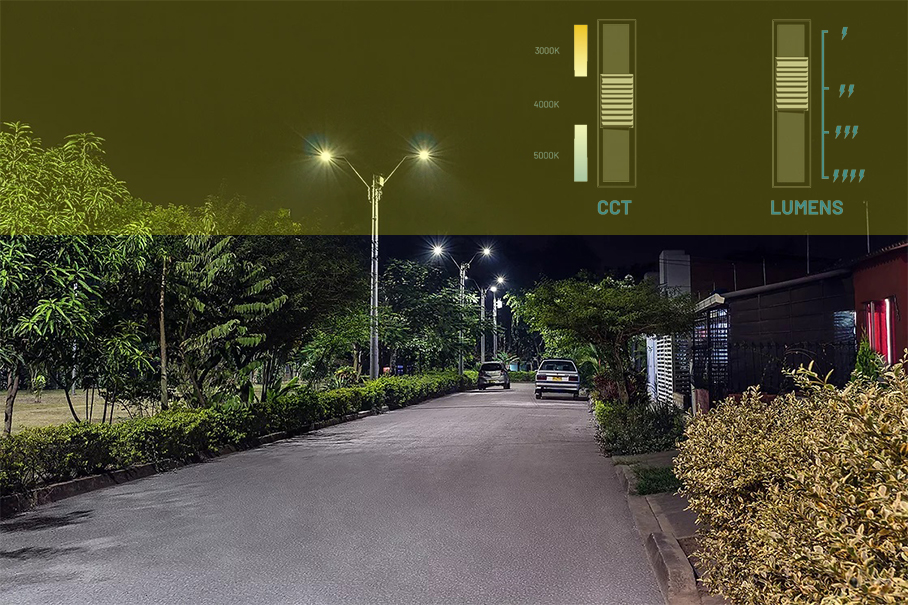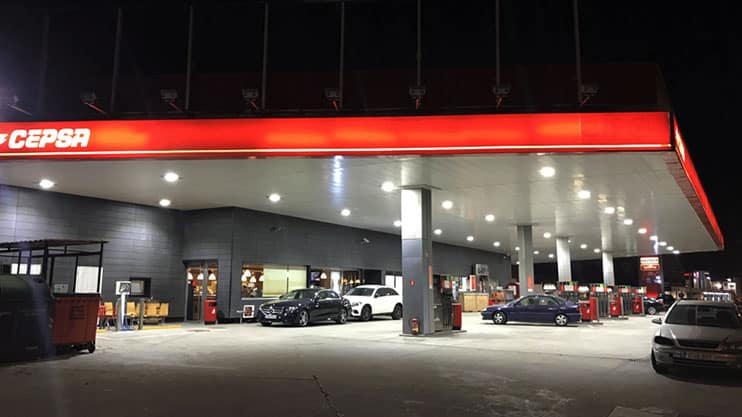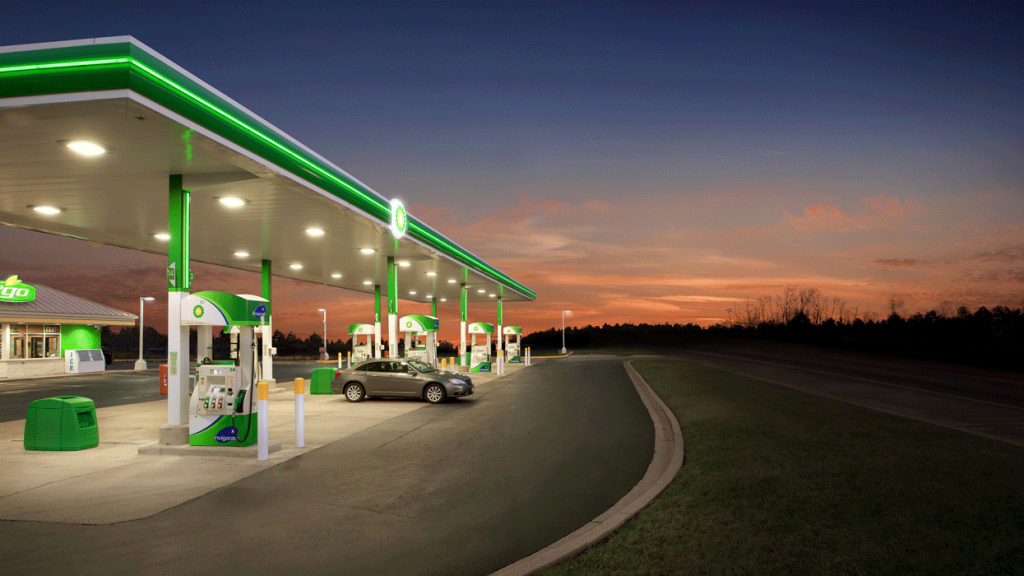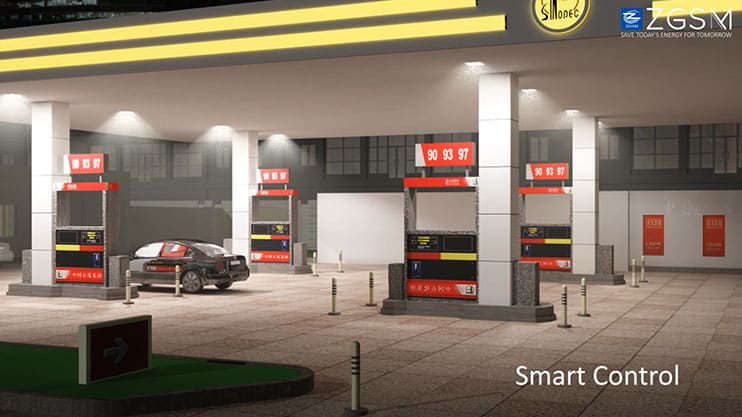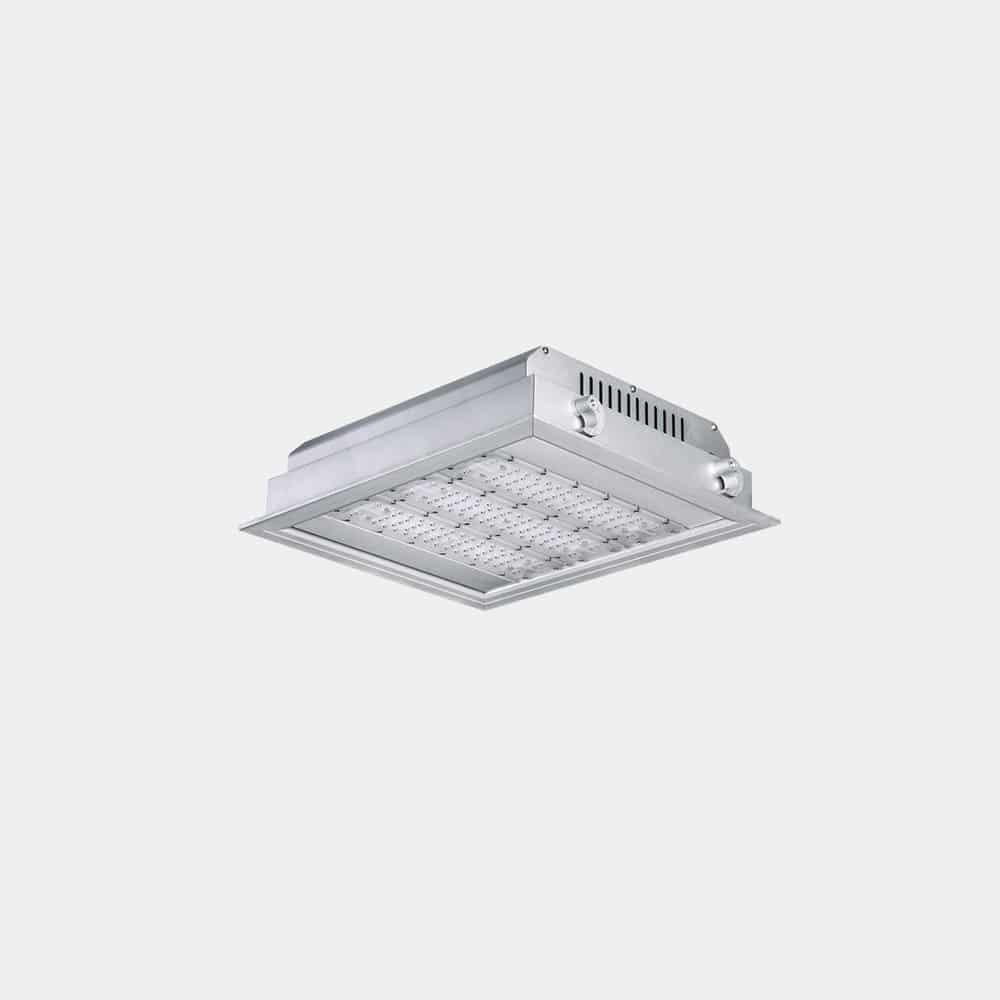What’s lighting uniformity and how to improve the uniformity in lighting?
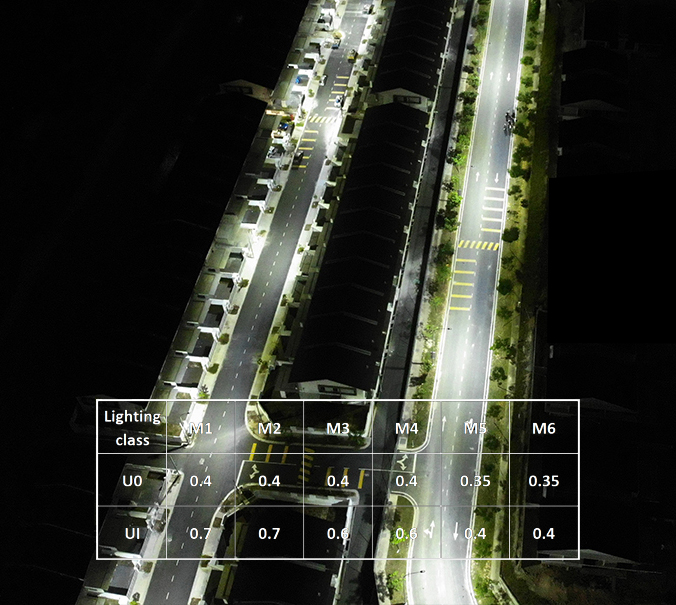
Taylor
Introduction
In the lighting industry, it is important to maintain adequate brightness/luminance (cd/m2 – candelas per square meter) and illuminance (lux levels). It ensures that people’s related activities at night are properly illuminated, ensuring the safety of driving, sports and work. However, many users ignore the measurement and calculation of lighting uniformity ratio. Whether it is lighting in commercial parking lots, lighting in industrial areas such as factories, or even lighting in stadiums, appropriate lighting uniformity is required to improve user perception. If the uniformity of outdoor or indoor lighting is low, citizens, workers or athletes may feel uncomfortable, thereby affecting their vision. This article mainly explains what lighting uniformity is, how to calculate lighting uniformity, its importance, the requirements for lighting uniformity in different lighting areas and how to improve lighting uniformity, so as to deepen everyone’s understanding of lighting uniformity.
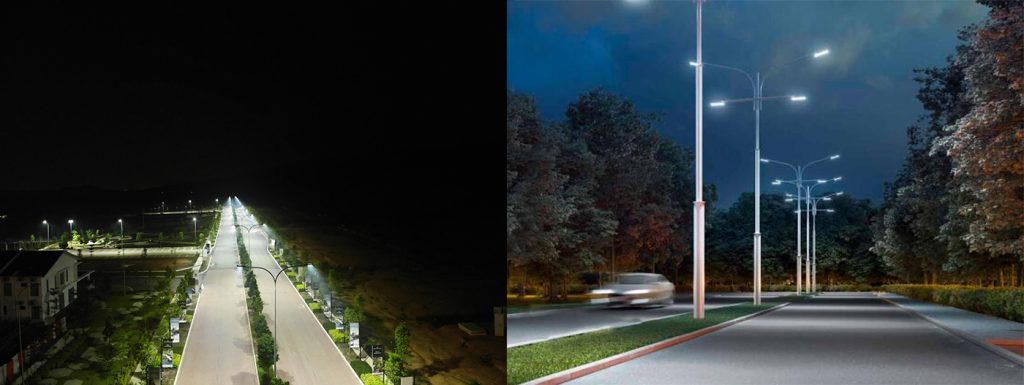
What’s uniformity and how to measure it?
Lighting uniformity refers to whether the lighting system provides uniform illumination distribution in a specific area. It refers to the ratio of the minimum luminance/illuminance to the average luminance/illuminance on a calculated surface. The higher this value is, the more evenly the lights are distributed on the ground/lighting area. Lighting uniformity can be divided into luminance uniformity and illuminance uniformity. The former is the ratio of minimum luminance to average luminance, and the latter is the ratio of minimum illuminance to average illuminance. That is, light intensity uniformity = minimum illuminance/average illuminance, illuminance uniformity = minimum illuminance/average illuminance. In theory, this value can be up to 1 for a completely uniform lighting system, but in practical applications it is almost impossible to achieve it.
In lighting applications, we can calculate lighting uniformity through lighting simulation software such as Dialux, AGI32, Relux, etc. It can simulate and calculate lighting effects through the size of the venue, the arrangement of lamps and the characteristics of the lens of the lamps, including illuminance, luminance, uniformity and glare, etc. The uniformity is calculated by calculating the minimum illuminance and average illuminance in the lighting area, then get the lighting uniformity ratio. In addition to lighting simulation software, we can use lux meters and light intensity(candela) meters to measure the illuminance and luminance in the lighting area. Of course, we do not directly obtain the parameter of lighting uniformity. By measuring the illuminance/luminance at different points in a specified area (taking the motorway as an example), we can obtain a set of data, as shown in the table below. Through calculation, we can find that the average luminance of road 1 whose lane A is 0.89 cd/m2, and the minimum brightness is 0.44cd/m2, that is, uniformity = 0.44/0.89 = 0.49. Similarly, the uniformity of lane B=0.5/0.94=0.53. By the same method, we can find the uniformity of the two lanes in Road 2. Due to the unreasonable lens, the uniformity of the two left lanes on road 2 is not very good. We can also see from the picture that there are obvious dark spots on the road, which can lead to insufficient lighting and cause traffic accidents.
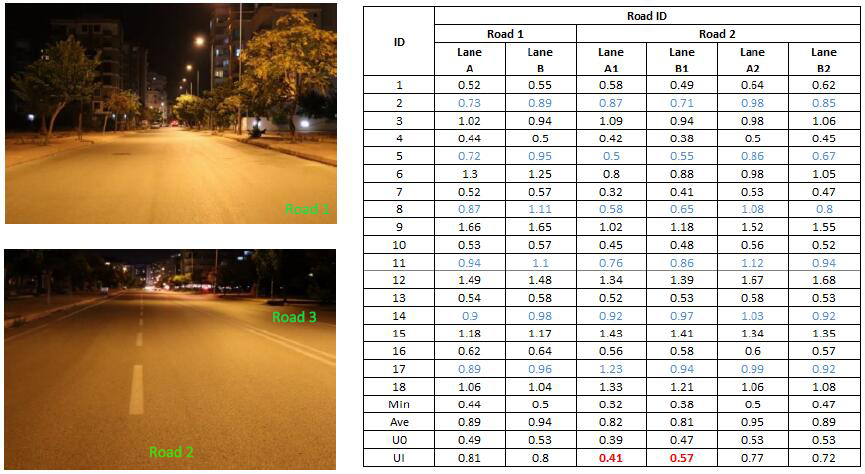
Why care about lighting uniformity?
The importance of lighting uniformity is reflected in the fact that it directly affects people’s feelings, visual experience and work efficiency in the lighting environment, as we will explain one by one below.
1. In road lighting, if the uniformity of lighting is not high, very bright and very dark spots will appear on the road. Imagine that when you are driving or walking on such a road, the brightness/illuminance changes frequently. This will inevitably cause eye fatigue for drivers and pedestrians, and they will seriously be unable to distinguish obstacles, leading to traffic accidents.
2. In indoor lighting, uneven illumination will cause illumination in some areas to obviously not meet the requirements. This will affect the lighting in the area that cannot meet the requirements for work, reading and sports, etc., thereby affecting work efficiency, readers’ vision and the safety of athletes.
3. In stadium lighting, uneven illumination will cause discomfort to the visual system. Whether it is a spectator or a player, in this case, when their pupils need to continuously contract and expand to adapt to the difference in illumination in different areas, this will affect the visual comfort of the athletes and spectators, and ultimately affect the progress and enjoyment of the game.
Lighting uniformity standards in different application
Lighting uniformity for road Lighting
The main purpose of road lighting is to ensure that drivers and pedestrians can drive safely and comfortably. Improving road lighting is an effective way to reduce the number of fatal and injury accidents. Road lighting standards are mentioned in CIE 115 “Recommendations for the Lighting of Roads for Motor and Pedestrian Traffic”. At present, we often hear that standards such as M2, M3a and M4a are described in more detail in EN13201. According to this standard, there are 6 different lighting levels for road lighting, and each lighting level has different lighting requirements. It includes average brightness (Lave), overall uniformity (U0), longitudinal uniformity (UI), incapacitation glare (TI) and ambient lighting (SR).
Overall uniformity is a measure of the uniformity of road lighting. The overall uniformity is obtained by dividing the minimum brightness (Lmin) by the average brightness (Lave): U0=Lmin/Lav. Longitudinal uniformity is the ratio of the minimum and maximum brightness on a single lane, that is, UI=Lmin/Lmax. Reasonable longitudinal uniformity is a measure to reduce the intensity of light and dark stripes on the road lighting surface. PS: lane of travel is the center line of each lane of the calculation grid. The following are the corresponding standards for uniformity of roadway lighting.
| Lighting class | M1 | M2 | M3 | M4 | M5 | M6 |
| U0 | 0.4 | 0.4 | 0.4 | 0.4 | 0.35 | 0.35 |
| UI | 0.7 | 0.7 | 0.6 | 0.6 | 0.4 | 0.4 |
Lighting uniformity in sports lighting
In stadium lighting, uniformity is the even distribution of light across the playing surface. The better the uniformity, the more guaranteed there are no changes in lighting levels that could impact athlete performance or safety. In stadiums, lighting uniformity includes U1h and U2h, while in some stadiums with television broadcasts, there will be requirements for U1v and U2v. Here, U1h is a measure of horizontal uniformity of illuminance and it’s a ratio of minimum horizontal illuminance to maximum horizontal illuminance. And U2h is a measure of horizontal uniformity of illuminance which is a ratio of minimum horizontal illuminance to average horizontal illuminance. For example, in football field lighting, 19 (X axis) * 13 (Y axis) is generally selected, with a total of 247 reference points. Then we need to measure the illuminance at these value points, because it ultimately affects the performance of lighting uniformity. The following are the uniformity requirements for different courses.
| Sports field | Football | Tennis outdoor | Volleyball indoor | Basketball indoor | Baseball | Multipurpose court |
| Class I | 0.7 | 0.7 | 0.7 | 0.7 | 0.7 | 0.7 |
| Class II | 0.6 | 0.7 | 0.7 | 0.7 | 0.7 | 0.7 |
| Class III | 0.5 | 0.6 | 0.5 | 0.5 | 0.5 | 0.5 |
Lighting uniformity in other outdoor lighting – Parking lot, gas station, shipyard
Other outdoor areas also have corresponding requirements for lighting uniformity. Due to space limitations, we will not elaborate here. Below we list the lighting uniformity requirements for parking lots, gas stations, docks and airports, etc.
| Other outdoor area | Parking lot | Gas station | Outdoor warehouse | Shipyard and docks | Airports |
| Uniformity | 0.25 | 0.4 | 0.25-0.5 | 0.25-0.5 | 0.1-0.5 |
Lighting uniformity in indoor lighting
The illumination uniformity of indoor lighting is usually expressed as the ratio of the minimum illumination produced by a general lighting system on the work surface to the average illumination. Uniform lighting is needed in a lighting area because the human eye takes some time to adjust to different light levels. The uniformity of the working area is recommended to be greater than 0.60. Different places have different requirements for lighting uniformity (see the table below), which are generally between 0.4-0.7. For example, the warehouse requires uniformity >0.4, the parking lot requires >0.4, the cable production workshop requires >0.6, and the electronics workshop requires >0.7. The lighting uniformity requirements for different indoor areas are shown in the table below. Their requirements are different because the operating requirements of different indoor places are different. Above the set uniformity level, people cannot perceive changes in light levels, which makes them feel comfortable and conducive to related work.
| Indoor area | Store and stockrooms | Dispatch packing handling areas | Public car parks | exhibition halls | Die casting | Cable and wire manufacture | Electronic workshops, testing, adjusting |
| Uniformity | 0.4 | 0.6 | 0.4 | 0.4 | 0.6 | 0.6 | 0.7 |
How to improve the uniformity in lighting?
Through the study in the previous sections, we know the importance of lighting uniformity and the different requirements for uniformity in different lighting areas. As practitioners in the lighting industry, we need to know what kind of lighting design can achieve the required lighting uniformity, and how we should improve the lighting design that does not meet the lighting uniformity requirements. ZGSM will explain from the following four points.
1. Lens selection of lamp
Whether it is road lighting, stadium lighting, other outdoor lighting and indoor lighting, we all need to pay attention to the importance of lenses in lighting design. If an unreasonable lens is used in the project, the light will not be reasonably distributed in the illuminated area. This will make some areas very bright and other areas very dark, resulting in a uniformity that does not meet the lighting requirements. For example, road lighting is more suitable to use Type IIM or Type IIM (based on IESNA standards) light distribution. On the contrary, Type V lenses are not suitable for road lighting.
2. Adjustment of lamp wattage
In road lighting, the wattage of individual lamps has no impact on lighting uniformity. In Dialux, you can try that when the distribution of lamps is certain, U0 and UI will not change no matter how you change the wattage of the lamps. However, in stadium lighting we can achieve better lighting uniformity by properly combining stadium lights with different wattages. For example, floodlights with aiming points far away from the light pole can be chosen with higher wattage, while floodlights with aiming points close to the light pole can be chosen with lower wattage. As shown in the figure below, we can compare the difference in lighting uniformity between stadium lights with the same wattage and different wattage. In the picture on the lower right, the data shows that the lighting uniformity of the tennis court has been effectively improved by using floodlights of different wattages.
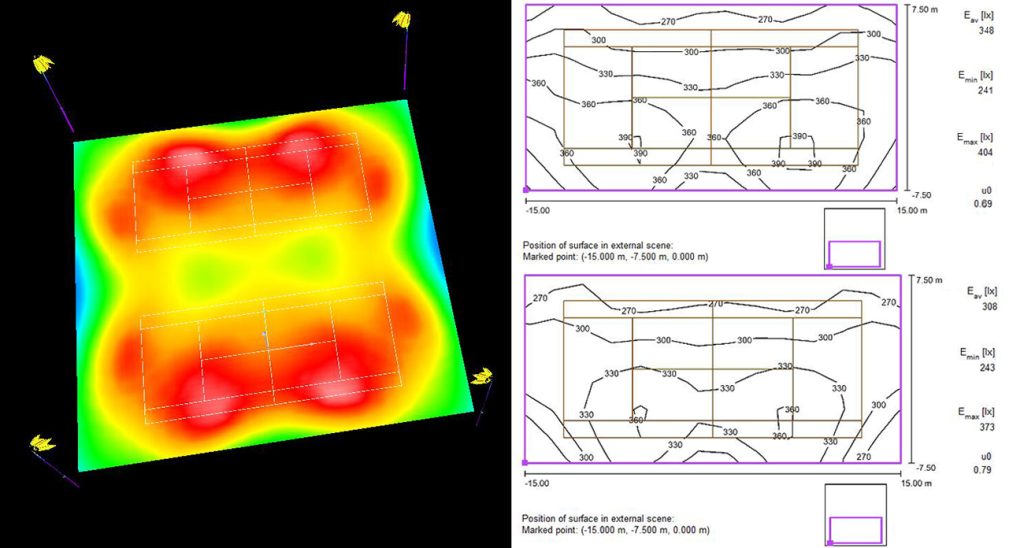
3. Adjustment of lamp layout
Lamp layout refers to the layout or distribution of lamps in space, including the position, height, aiming points, etc. of lamps. For example, in road lighting, the arrangement of street lights, installation height, light pole height, light pole spacing, arm length and tilt angle, etc., will all affect the lighting uniformity. In some projects, some parameters cannot be changed (such as light pole arrangement, height and spacing), while for other parameters, we can appropriately adjust to provide lighting uniformity. Similarly, in sport field lighting, we appropriately adjust the position, height and projection direction of the high mast during project design to provide lighting uniformity.
4. Application of asymmetric lighting distribution
Asymmetric light distribution means that the light in the lamp is directed to one side or a specific direction, typically such as the bat-wing light distribution of a street lamp. Symmetrical light distribution means that the light in the lamp spreads evenly in all directions without bias, a typical example is the 110° beam angle of a floodlight. In road lighting, the light distribution of the batwing can better distribute the light on the road. The light emitted from the lamp has a wide coverage area, whether along the road or across the road. In stadium lighting, asymmetric light distribution also has corresponding applications. It can not only provide lighting uniformity, but also effectively reduce the impact of uncomfortable glare on athletes.
ZGSM lighting solutions with optimized light distributions
All ZGSM lamps are available in a variety of lenses and wattage options. Different light distributions (symmetrical and asymmetrical) enable our lamps to adapt to different road layouts, court layouts and other outdoor locations, and in practical applications, our design can well meet the project’s lighting uniformity requirements. ZGSM’s LED products are listed below, including street lights, floodlights, highmast lights, gas station lights and solar street lights. If you are interested, please click on the relevant product for more information.
Summary
This article provides an in-depth explanation of the concept of lighting uniformity, how it is calculated and measured, and the importance of uniformity in lighting applications. As we know now, lighting uniformity is the ratio of minimum illuminance (luminance)/average illuminance (luminance), which directly affects people’s safety, visual comfort and work efficiency in the lighting environment. Different lighting areas (roads, stadiums and indoor venues) have different requirements for lighting uniformity. In motor vehicle lane lighting, what is required is brightness uniformity; in stadium lighting and indoor lighting, what is required is illumination uniformity. In addition, different road conditions, competition levels and indoor work types have different requirements for uniformity. Require. We need to adjust and optimize according to the corresponding requirements. At the same time, we also briefly explained how to improve lighting uniformity. These measures include selecting reasonable lenses, reasonable lamp layout and reasonable lamp wattage, etc. If you are interested in this part, you can contact us directly for more information. Finally, if you are interested in street lights, stadium lights and other outdoor lighting fixtures, you are also welcome to consult ZGSM.
FAQ
Related Posts
Guide for canopy light with battery backup
Tags:
Author

Taylor
Sales Engineer
I am Taylor, with 10 years of experience in lighting sales. Throughout my career, I have developed a deep understanding of the lighting industry and its products. My expertise lies in building strong relationships with clients, understanding their needs, and providing tailored lighting solutions that align with their requirements.
